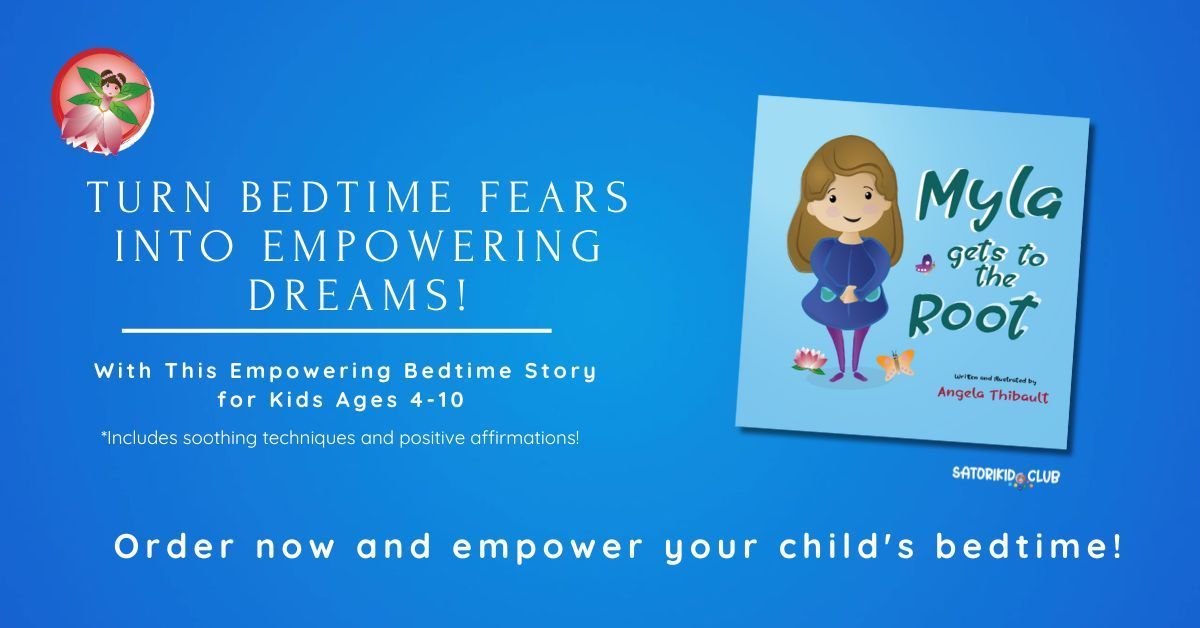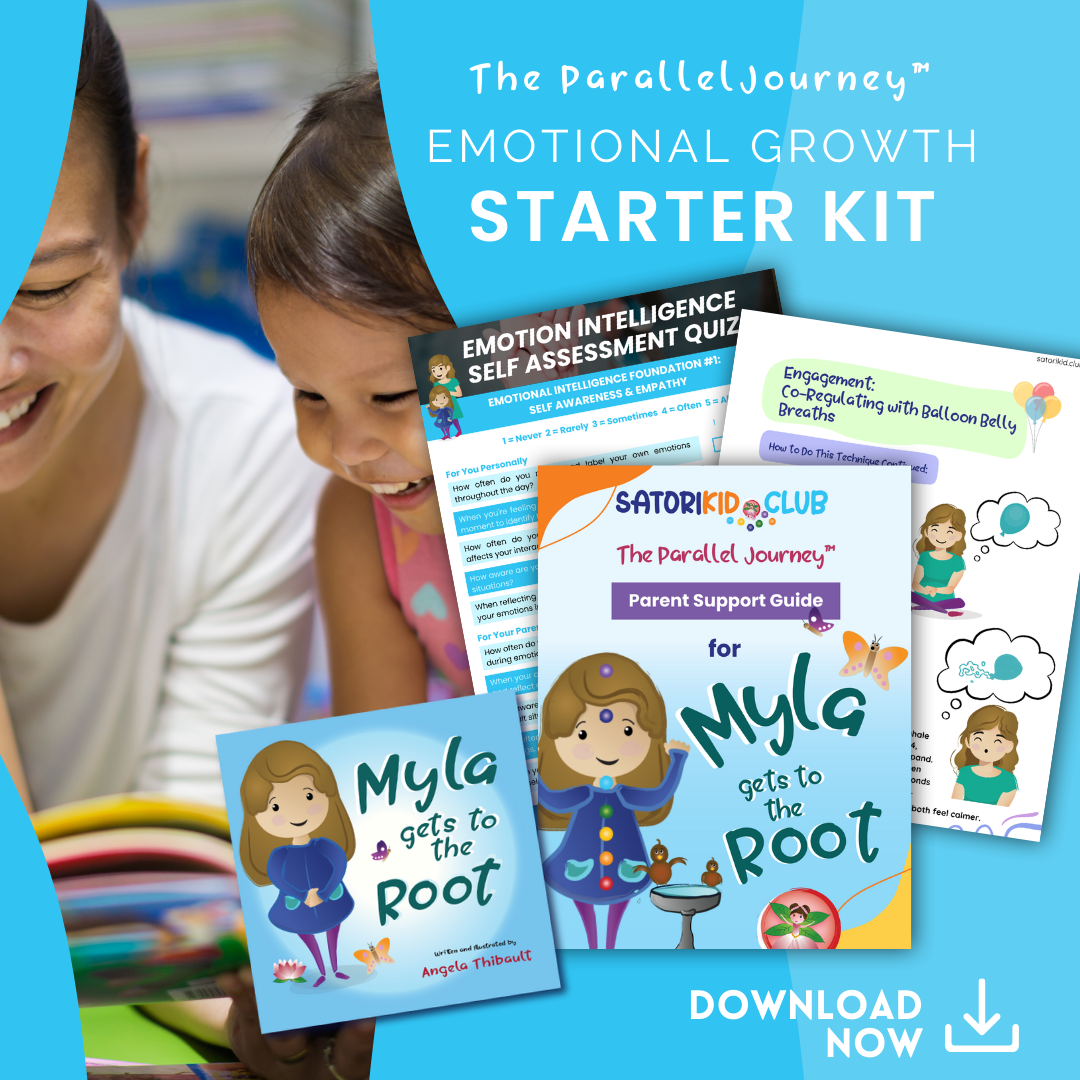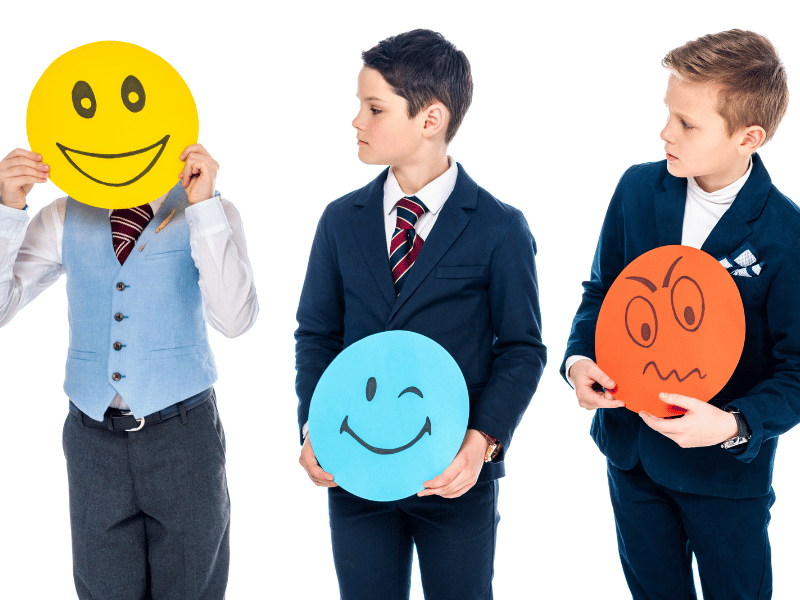Start your journey here
Embracing Empathy: Four Essential Ways to Teach Our Children Compassion
All activities should be supervised by an adult.
Share

Empathy is the heartbeat of compassionate understanding.
Empathy stands as a beacon of hope in a world of diverse perspectives and experiences, guiding our children toward a more compassionate and understanding future. Embracing empathy, particularly in the formative years, shapes not only the heart and mind of a child but also the very fabric of our society. As parents, educators, and caregivers, we wield the power to nurture this crucial trait, teaching our children to walk in the shoes of others, to feel the heartbeat of the world around them, and to extend their hands in kindness. Here, we explore four essential ways to teach our children the art of compassion, embrace empathy in their daily lives, and sow the seeds for a generation of caring, connected individuals.
Often, we prioritize success and achievement; sometimes, the gentle power of empathy can be overlooked. Yet, in the heart of our homes, empathy weaves the strongest bonds and fosters the most nurturing environments for our children. At Satori Kid Club, we understand this and have created a tip sheet to help families integrate empathy into their daily lives. This tool is not just a guide; it's a stepping stone towards building a compassionate future for our children.
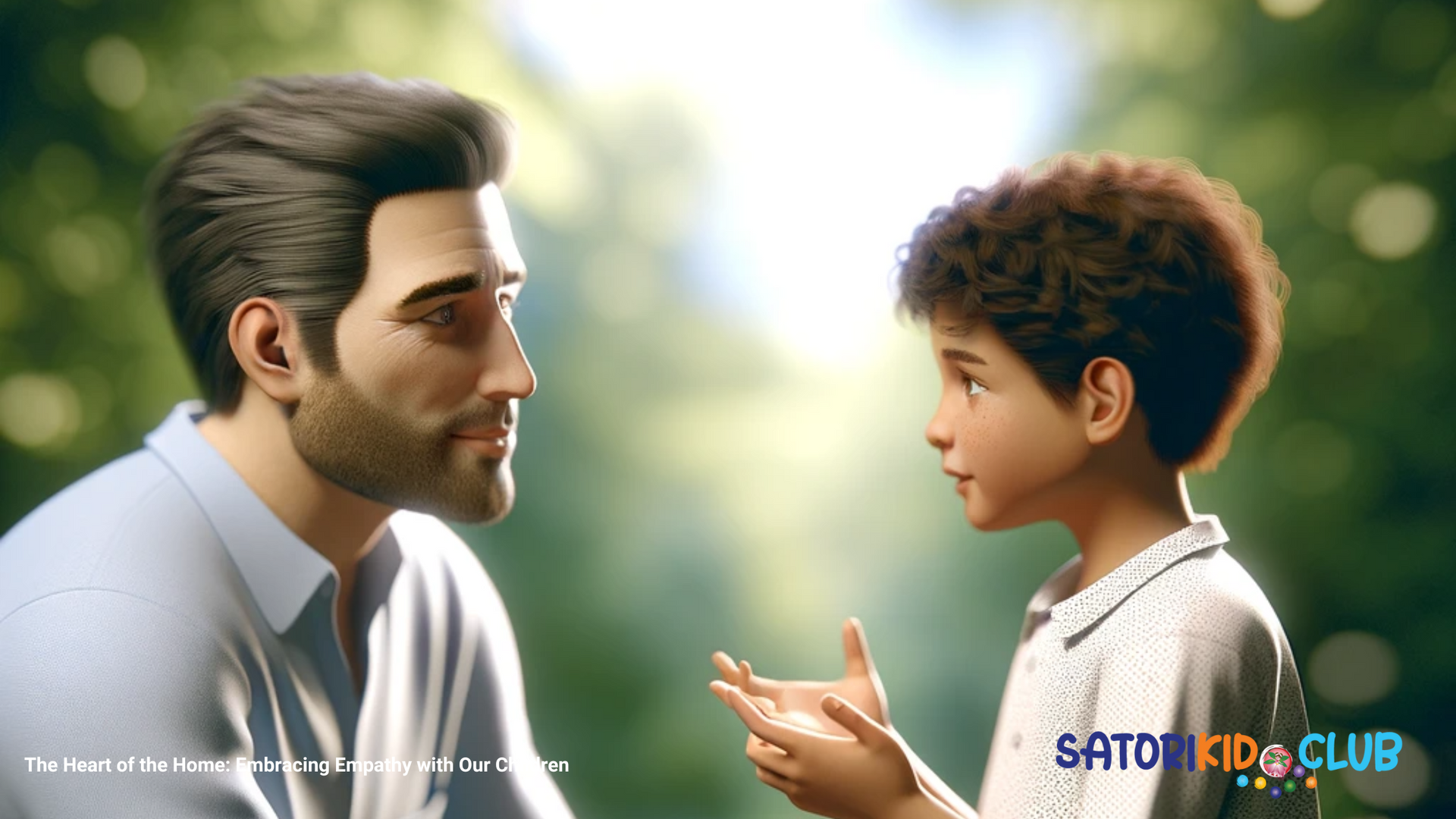
Listening with the Intent to Understand:
The first step in embracing empathy is active listening. It's about tuning in with all our senses to what our children say, acknowledging their feelings, and validating their experiences. We open doors to deeper communication when we listen to understand, not to respond. We teach our children that their thoughts and emotions are valued and essential. Imagine a world where every child feels heard; this is the world we nurture—one conversation at a time.
When we engage in active listening, we're not just hearing words but perceiving the emotions and the silent messages woven between phrases. The furrowed brow, the excited sparkle in their eyes, the hesitant pause before a confession – these nuances are the language of the heart that we must learn to interpret. We acknowledge our children's entire narrative, not just their spoken words. This depth of understanding is what lays the groundwork for genuine empathy. It signals to our children that we are fully present, ready to embark on the emotional journey with them, side by side.
Furthermore, active listening is a reciprocal act that fosters respect and strengthens familial bonds. It encourages our children to reciprocate the practice, to become listeners who seek to understand, to pause and consider before reacting. This fosters an environment where each family member feels respected and cherished for their individuality. In this space, children learn that empathy is not just a reactive emotion but a proactive choice, a conscious decision to connect and engage with the world with a compassionate lens. Through our attentive presence, we are sowing seeds for a future where empathy is as natural as breathing, where every voice holds weight, and every emotion is honored.

Putting Yourself in Their Shoes:
Empathy thrives on the ability to see the world through another's eyes. Encouraging our children to consider how others feel is a practice that enriches their emotional intelligence. It's about asking, "How would I feel in this situation?" and using those insights to foster understanding and kindness. This practice is essential for resolving conflicts and cultivating a lifelong habit of seeing beyond oneself.
This practice of perspective-taking is the heartbeat of empathy and teaches children to navigate the complex web of human emotions. By engaging in this reflective exercise, they understand that each person's actions and reactions are deeply rooted in unique experiences and emotions. For instance, when a sibling or friend reacts with anger or sadness, we guide our children not to jump to conclusions but to explore the possible reasons behind these emotions. "Could it be that they had a tough day?" or "Maybe they're feeling overwhelmed, just like you do sometimes?" This gentle nudge toward understanding transforms knee-jerk reactions into opportunities for connection and care.
Moreover, teaching our children to put themselves in another's shoes goes beyond immediate interpersonal interactions; it's a skill that extends to broader social understanding. When we hear about events in our community or stories from around the world, we can ask our children, "How do you think those people are feeling?" Asking this helps them to connect with and consider the lives of others, even those far removed from their own experiences. It fosters a sense of global empathy, planting the seeds for compassion that crosses borders and cultures. In nurturing this expansive view, we are helping to raise not just empathetic individuals but also compassionate citizens.
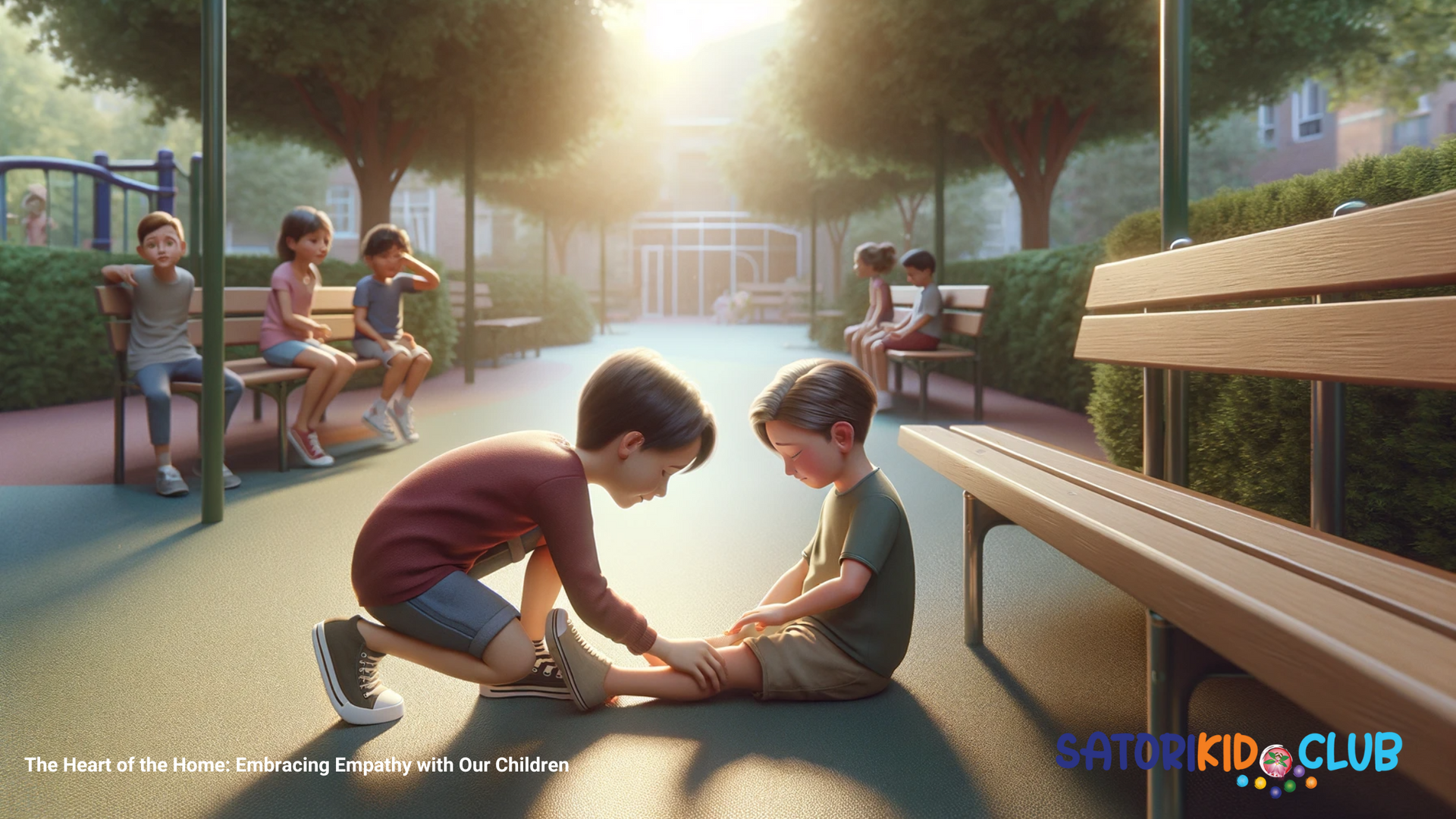
Communicating with Kindness and Compassion:
Words can heal or hurt; they are the vessels of our intentions. Communicating with kindness and compassion is a skill that will serve our kids throughout their lives. It's about choosing words that are as soft as they are strong, as purposeful as gentle. Doing so lays a foundation of trust and safety, allowing our children to express themselves freely and authentically.
Choosing our words with care is akin to selecting the brushstrokes in a painting; each phrase colors the canvas of our relationships. When we speak to our children with kindness, we paint a world where emotional expression is not only safe but valued. This form of communication teaches them that words have power—the power to mend a broken spirit, to bolster courage, and to weave the thread of understanding. It shows them that compassion is not merely felt but actively communicated. And as we nurture this practice within our homes, our children learn to replicate this art in their interactions, spreading ripples of kindness in their wake.
Furthermore, compassionate communication is a dialogue that involves listening as much as it does speaking. It is a two-way street where respect is given and received. When our children see us resolving conflicts with calm and compassionate words, they learn that differences don't have to result in discord. Instead, they see that with the right words spoken from the heart, bridges can be built. This lesson is invaluable, for it equips them with the emotional tools to approach life's challenges with a sense of empathy and a desire for harmony. As they grow, they carry this skill into the world, becoming ambassadors of kindness in a landscape that often forgets the importance of a gentle word.
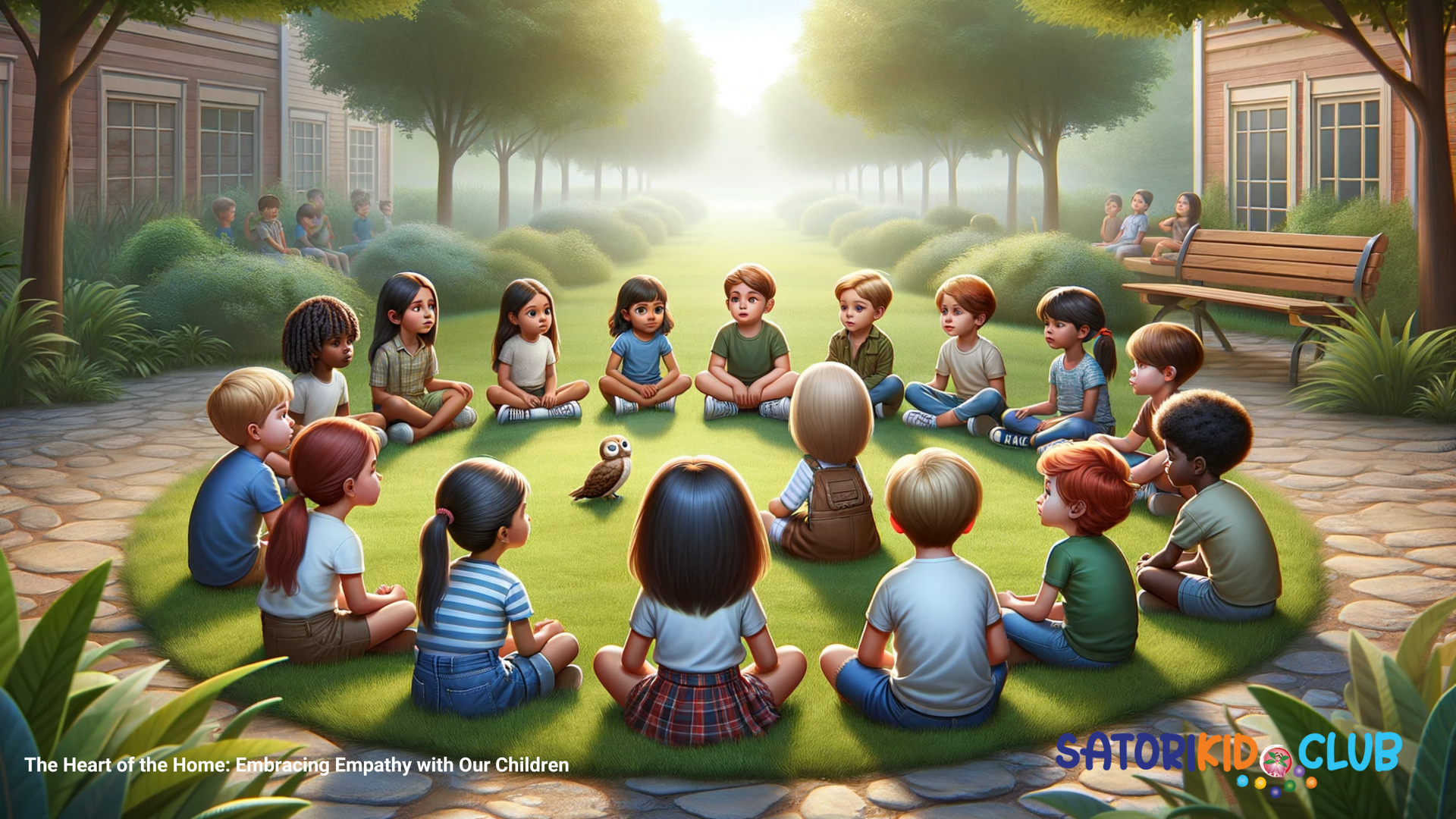
Practicing Patience and Acceptance:
Patience is the quiet hero in the journey of empathy. It's about giving space for emotions to be expressed without rush or judgment. By showing patience, we teach our children that taking the time to process their feelings is okay. Acceptance goes hand in hand with patience. It's about embracing each person as they are and celebrating the unique individuality of every family member.
Patience in practice allows us to sit beside our children in their moments of frustration, guiding them to solutions with a steady hand rather than leading with our urgency for resolution. This virtue becomes a sanctuary for growth, where children feel comfortable sharing their struggles, knowing somebody will not hurry them through their discomfort. Acceptance builds on this patience, cultivating an environment where children are appreciated for their entirety—their quirks, their questions, their quiet thoughts, and even their roaring emotions. It teaches them they are valued not despite their individuality but because of it.
Embracing each child's unique journey means understanding that development is not a race but a meandering path filled with learning curves. Acceptance means recognizing that a child's best today may look different tomorrow, and that's not just okay; it's expected and celebrated. When we accept our children wholeheartedly, we send a powerful message: You are enough. This assurance is the fertile ground in which the seeds of self-esteem and self-worth flourish. From these seeds grow the strong, resilient individuals of a mindful generation, ready to face the world with confidence in themselves and an empathetic understanding of others.
Conclusion:
Empathy is the thread that binds the tapestry of our humanity. By incorporating these four pillars of empathy into our families, we are not just raising children but nurturing future leaders, innovators, and caretakers of our world. The "Four Ways to Embrace Empathy" tip sheet on our website is more than just a resource; it's a reminder that the most minor acts of understanding can have the most significant impact.
Download the "Four Ways to Embrace Empathy" my tip sheet to keep these practices with you and begin weaving empathy into the fabric of your daily life. Let's embark on this transformative journey together and watch our children grow into the compassionate leaders of tomorrow.

Angela Thibault
Angela Thibault is a mother of two, a passionate children’s author, and the founder of Satori Kid Club and The Parallel Journey™.


